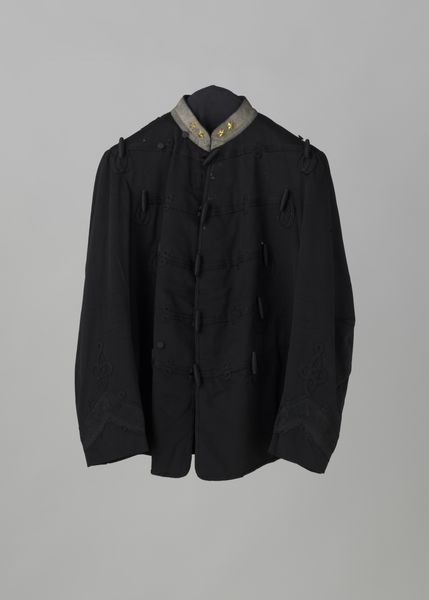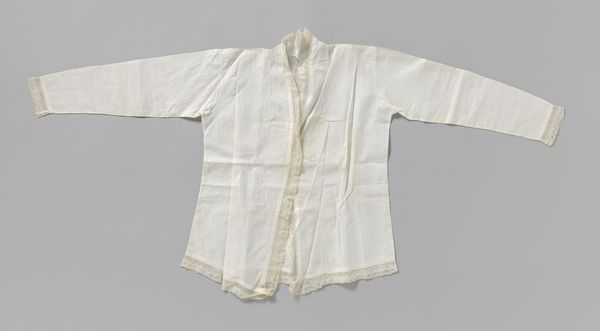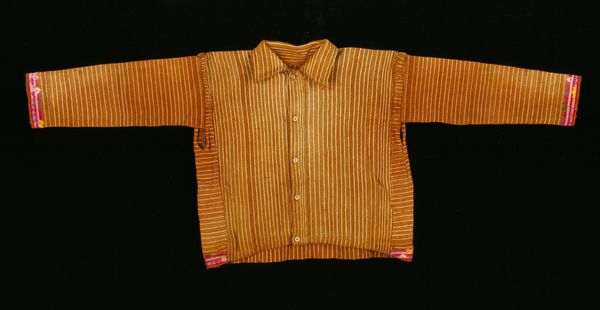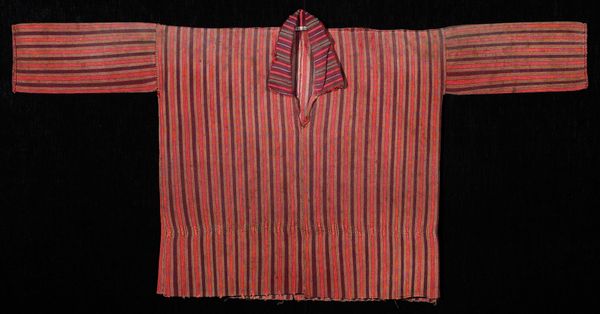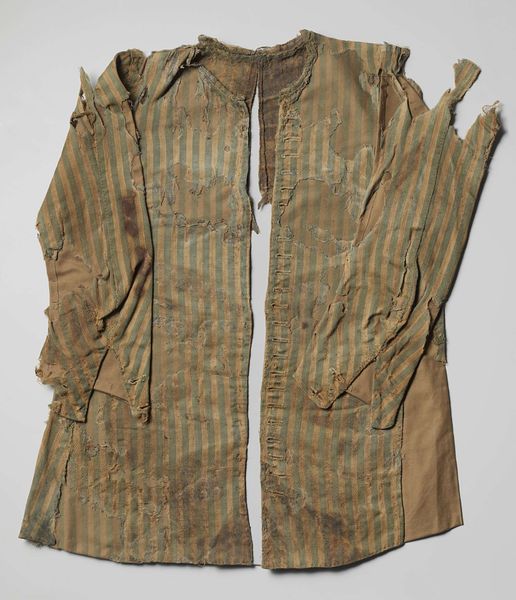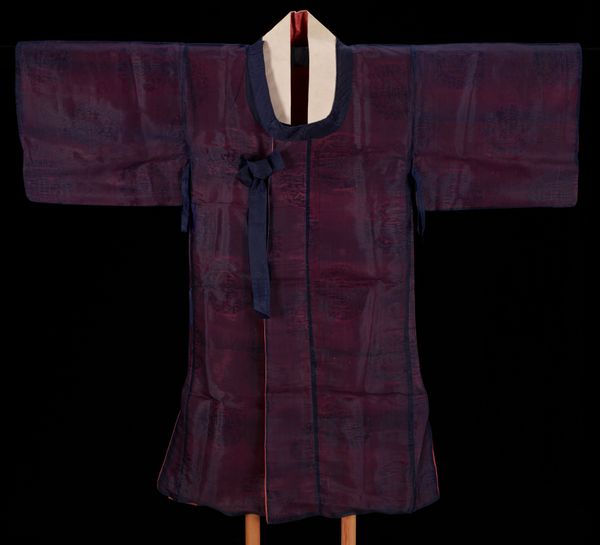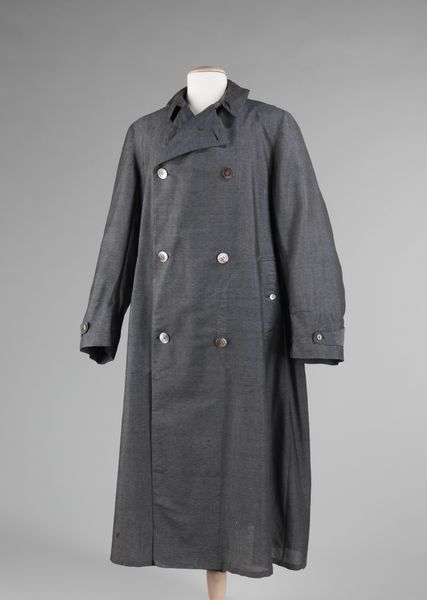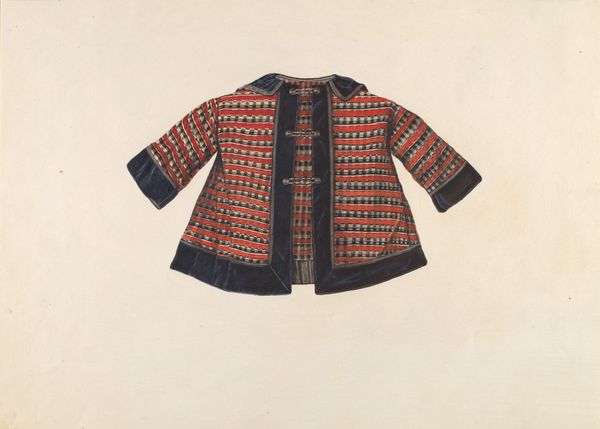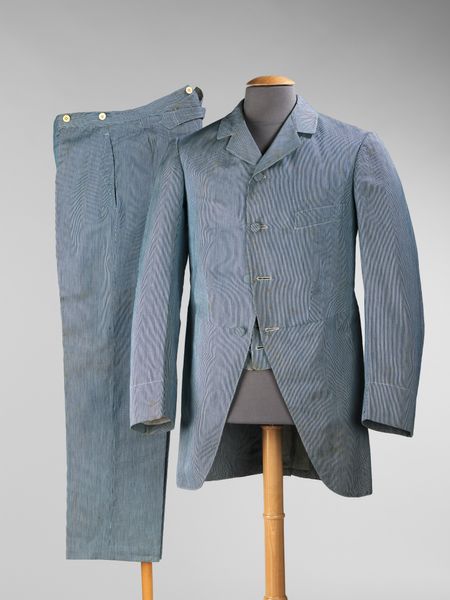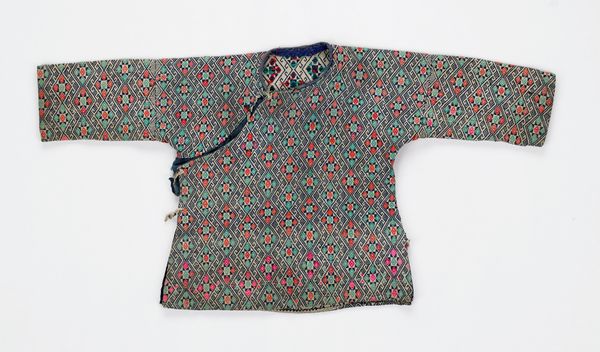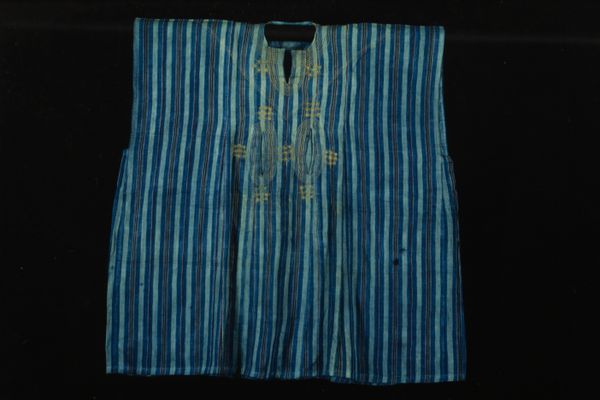
textile, photography
#
appropriation
#
textile
#
social-realism
#
photography
#
abstraction
#
history-painting
#
modernism
Dimensions: length 100 cm, width 70 cm
Copyright: Rijks Museum: Open Domain
Editor: Here we have a photograph of a concentration camp coat worn by Isabel Wachenheimer between 1938 and 1945. It's just a coat, but the stripes and faded colors make it feel so heavy, almost unbearably so. What stands out to you when you look at this garment? Curator: What stands out is the textile itself, a brutal symbol of imposed identity and dehumanization. These weren't just clothes; they were instruments of control. Consider the labor involved in their mass production – the very act of making and distributing these uniforms reveals the scale of the industrial process of oppression. Editor: So you're focusing on the making of the coat, the mass production. Curator: Precisely. Each stripe, each stitch speaks to a system designed to strip individuals of their identity. Where was the fabric sourced? Who were the labourers forced to produce them? What conditions did they endure to keep this cycle of suffering alive? By asking these questions, the coat stops being just a piece of clothing and becomes a potent symbol of the relationship between labor, materials, and state-sponsored violence. Editor: That's a chilling perspective, looking at it as an industrial product. I hadn’t considered the labor involved, just the symbolism. Curator: It is the insidious marriage of industrial processes and ideological goals, manifested in this very fabric, that chills to the core. The wear and tear also provides clues to life in the camps, from repairs and adaptation. Even in oppression, the human spirit attempts to remake the garment. Editor: This makes me look at historical objects very differently, thinking about all the invisible labor and resources behind them. Thank you. Curator: Indeed. Material analysis brings those stories into sharper focus, forcing us to confront the complex interplay of production, consumption, and human cost.
Comments
rijksmuseum about 2 years ago
⋮
Isabel Wachenheimer (1928-2010) wore this numbered prison coat at Lenzing-Pettighofen concentration camp in Austria. She had been transferred to this labour camp from Auschwitz death camp along with 500 other Jewish women in October 1944. This was just after Isabel’s parents, Eugen and Else Wachenheimer, had been murdered in Auschwitz. After the war, Isabel sewed her surname on the coat. A label under the collar states: Wachenheimer.
Join the conversation
Join millions of artists and users on Artera today and experience the ultimate creative platform.
